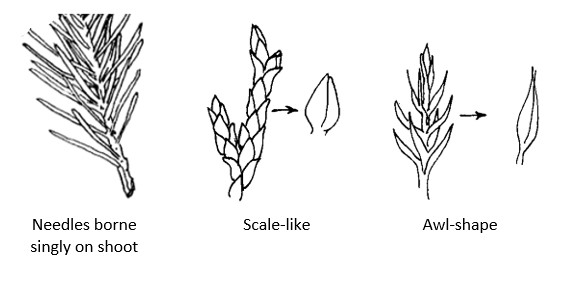PLANT MORPHOLOGY – CONIFERS
Both evergreen and deciduous leaves exhibit characteristic broad blades in angiosperms, and narrow needle, scale-like, or awl-shaped leaves in the conifers. Figure 15.1 illustrates the different types of conifer leaves. Leaves may be borne singly on the shoot as in Picea spp. (spruce), in tufts or clusters as in Larix spp. (larch), or in fascicles (bundles) of 2-5 as in Pinus spp. (pines). The awl-shape and scale-like foliage of Juniperus spp. exhibits leaf dimorphism where a juvenile leaf form differs from the mature leaves of the same plant.

Comments
Post a Comment